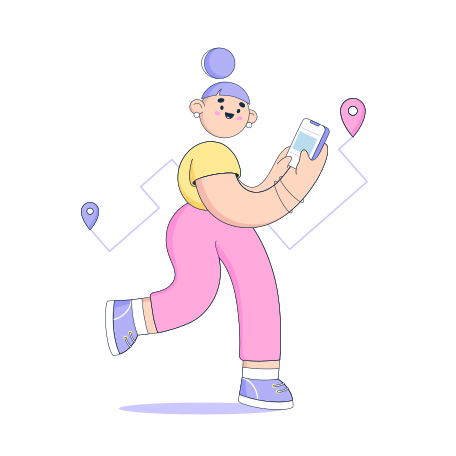Navigation icons are graphical symbols that represent different functions and features in digital user interfaces, including websites, mobile applications, and software programs. These icons are commonly used to make user interfaces more intuitive and user-friendly, by providing visual cues and reducing the need for text explanations. In this article, we’ll explore the concept of navigation icons in more detail, including their purpose, design principles, and best practices for using them effectively.
What is the Purpose of Navigation Icons?
Navigation icons serve several important purposes in digital user interfaces, including:
Providing Visual Cues
Navigation icons can be used to provide visual cues that help users understand the purpose and function of different elements in a user interface. For example, a magnifying glass icon is often used to represent a search function, while a hamburger icon is used to represent a menu.
Reducing Cognitive Load
By using visual symbols rather than text explanations, navigation icons can help reduce cognitive load for users. This is especially important in mobile interfaces, where space is limited and users may be using the interface in a distracting or time-sensitive environment.
Enhancing Aesthetics
Well-designed navigation icons can enhance the aesthetic appeal of a user interface, making it more visually appealing and engaging for users.
What are the Design Principles for Navigation Icons?
To be effective, navigation icons should be designed with certain principles in mind, including:
Clarity
Navigation icons should be clear and easily recognizable, even at small sizes or low resolutions. This means avoiding overly complex or abstract designs, and using simple, recognizable shapes and symbols.
Consistency
Navigation icons should be consistent with each other and with other visual elements in the user interface. This means using the same style, size, and color scheme for all icons, and avoiding mixing different design styles or visual metaphors.
Meaningfulness
Navigation icons should have clear and meaningful associations with their corresponding functions or features. This means avoiding using generic or ambiguous symbols, and using symbols that are commonly associated with the intended function or feature.
What are the Best Practices for Using Navigation Icons?
To use navigation icons effectively in a user interface, it’s important to follow certain best practices, including:
Limiting the Number of Icons
Using too many navigation icons can overwhelm users and make the interface more difficult to use. It’s best to limit the number of icons to only the most essential functions and features.
Using Labels When Necessary
While navigation icons can help reduce cognitive load, they may not be sufficient on their own. In some cases, it may be necessary to include text labels to provide additional context or clarification.
Testing with Users
Before implementing navigation icons in a user interface, it’s important to test them with users to ensure they are clear and effective. This can involve usability testing, user surveys, or other feedback mechanisms.
Conclusion
Navigation icons are a valuable tool for enhancing the usability and aesthetics of digital user interfaces. By providing visual cues, reducing cognitive load, and enhancing aesthetics, they can help improve the overall user experience. To use navigation icons effectively, it’s important to follow design principles and best practices, including clarity, consistency, and meaningfulness, and to test them with users before implementing them in a live interface.
FAQs
Q: What are some common navigation icons? A: Some common navigation icons include the magnifying glass (for search), the hamburger menu (for a menu), the arrow (for navigation), and the home icon (for returning to the home page).
Q: Can navigation icons be customized? A: Yes, navigation icons can be customized to fit the branding and design of a specific interface. However, it’s important to ensure that custom icons are still clear and easily recognizable.
Q: Are there any accessibility considerations when using navigation icons? A: Yes, it’s important to consider accessibility when using navigation icons. This can involve using alternative text for screen readers, ensuring appropriate color contrast for users with visual impairments, and providing alternative navigation options for users who may not be able to use the icons.
Q: Can navigation icons be used in print design? A: While navigation icons are primarily used in digital user interfaces, they can also be used in print design to enhance the visual appeal and usability of printed materials.
In conclusion, navigation icons are an important component of digital user interfaces. They serve to make interfaces more user-friendly and intuitive, reduce cognitive load, and enhance aesthetics. By following design principles and best practices, and testing with users, navigation icons can be effectively used to improve the overall user experience.
